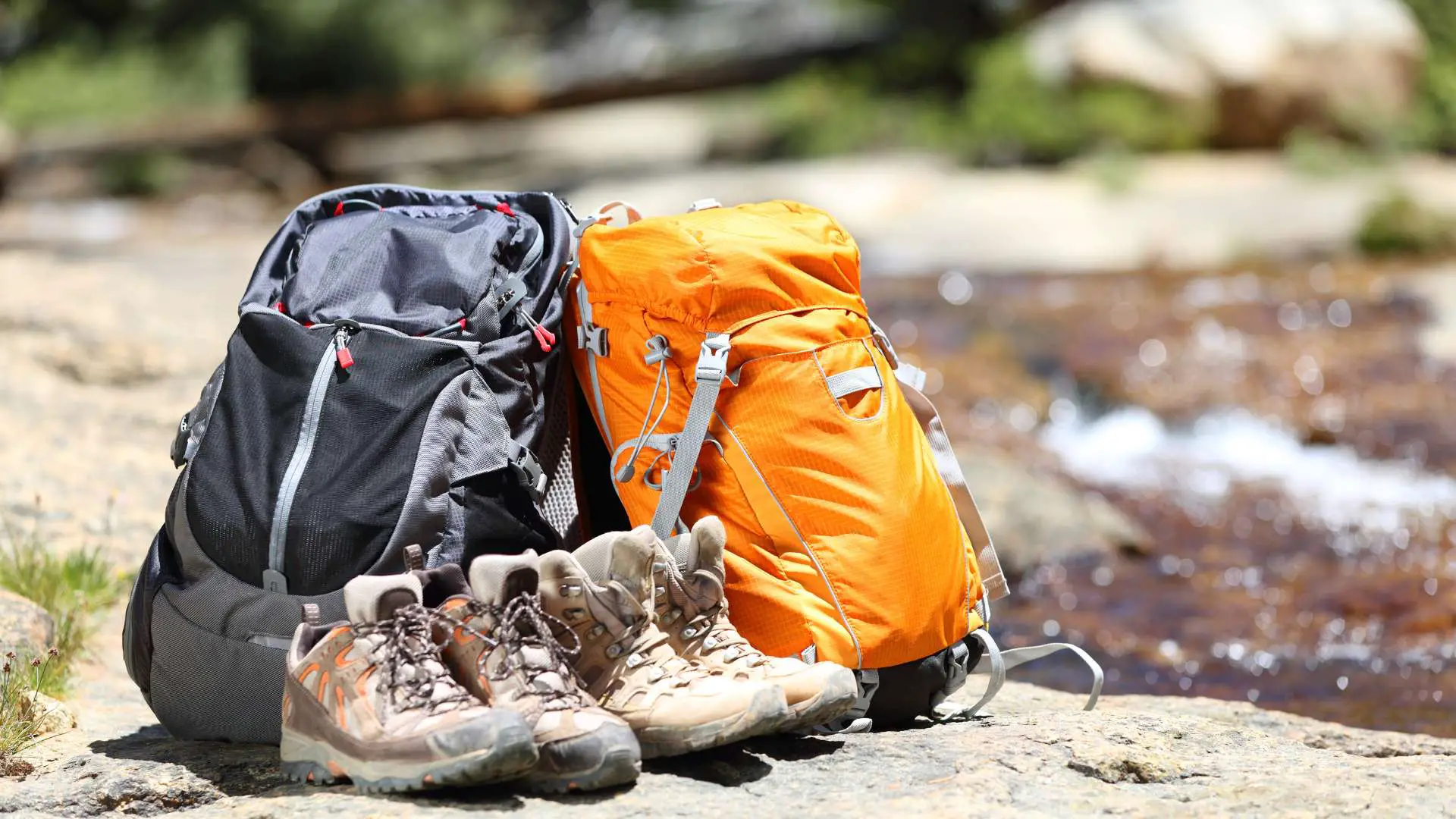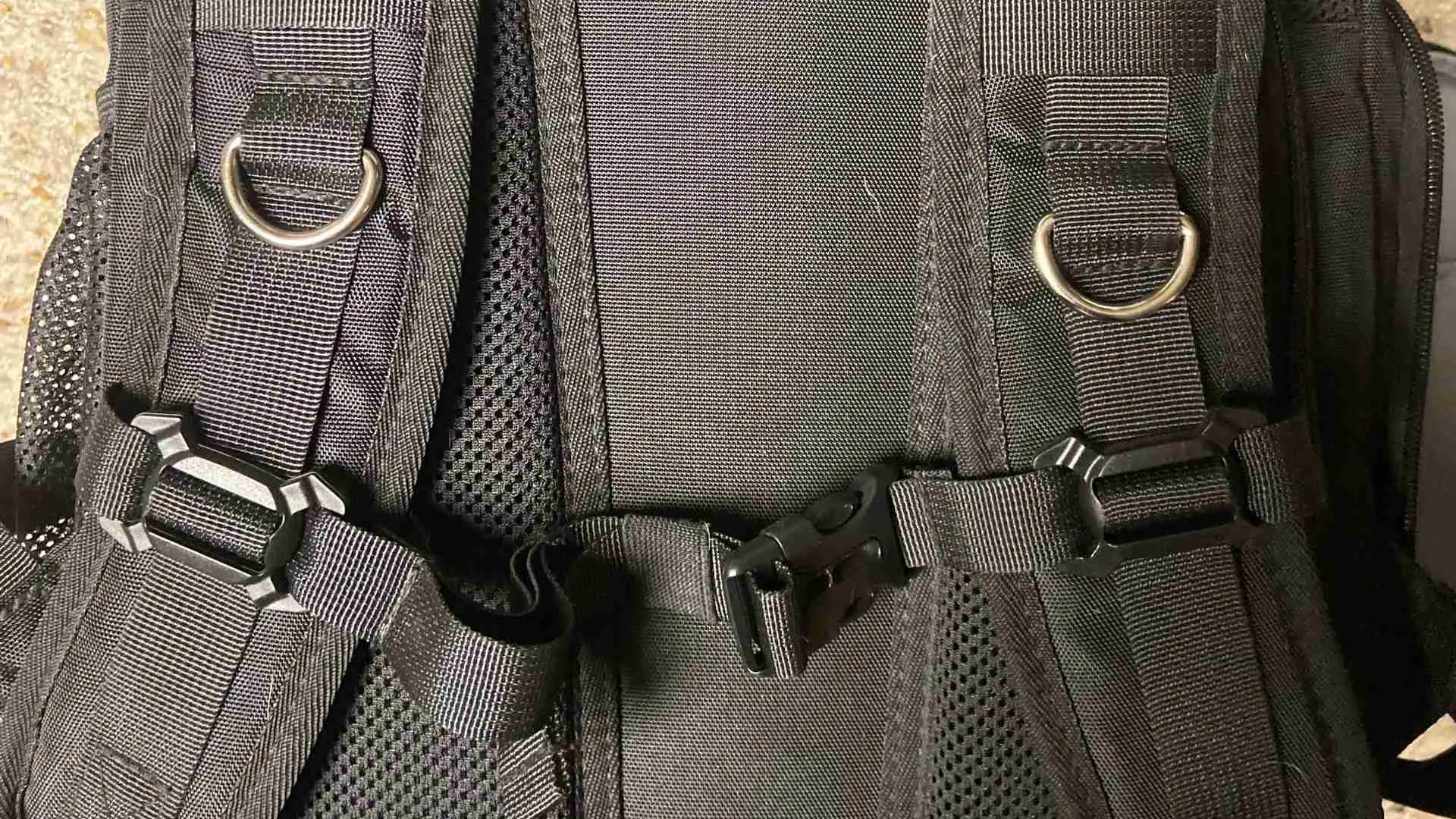Planning out all the gear for your first 3 Day weekend backpacking trip can be overwhelming. An overnight trip doesn’t seem so daunting since you can survive anything for a single night, but nobody wants to be miserable all weekend. Don’t worry! Planning out your gear for a 3 day backpacking trip isn’t all challenging once you break it down to the basics.
What should I pack for a 3 day backpacking trip? The answer is pretty simple. Pack everything you would need for an overnight trip, plus extra consumables items like food, fuel, and toilet paper. It doesn’t matter if you go on a short 24 hour hike or a week long trip, most of your gear stays the same. Focus on the 10 essential pieces of backpacking gear, add in a sleep system, cooking gear, way to store your food, and a 40-50 liter pack.
Sorry that I make it seem seem so obvious, but I can almost guarantee you’re overthinking the topic. If you focus on the 10 essential backpacking items you should have more than enough gear to handle a 3 day backpacking trip. But what are the 10 essential items every backpacker needs to carry?
Table Of Contents
What Should I Pack For A 3 Day Backpacking Trip?

It doesn’t matter how far or long you’re traveling on a backpacking trip. You should pack the same basic items regardless of trip length. My overnight backpacking list and 2-Week List look almost identical. I carry extra food, fuel, and toilet paper, but it’s basically the same. So what do I need for a 3 day backpacking trip?
Gear List For A 3 Day Backpacking Trip
Hitting the trail with nothing but life’s essentials is one of lifes greatest outdoor adventures. Ask yourself a few questions before you start planning out a gear list. How far do you plan to hike? How remote is the location? What’s the weather like? Do you have to deal with bears(you’d need a bear canister, bear spray, etc).
Longer hikes and bad weather require additional gear. You’ll have to carry more clothing, gear, food, and figure out a way to filter water. Here’s a rundown of everything I bring on a backpacking trip. You might need to add additional items depending on the situation and always refer to the 10 essentials below to make sure you’re not forgetting anything.
Keep in mind that this list is deliberately comprehensive. It’s intended for trips deep into the backcountry where you need to be self-sufficient and carry everything in. Remember that loading your pack is a balancing act. You need to try to keep the pack weight low without getting rid of essential items. There are definitely things on this list that you can get rid of to cut weight(I’ll mark these optional).
Here’s a brief list of everything you need and then I’ll go into further detail with lots of optional items.
- 10 Backpacking Essentials (listed below)
- Hiking Boots or Trail Runners (lightweight athletic shoes also work)
- Tent or Other Means of Shelter
- Backpack (40-50 Liters is perfect for weekend trips)
- Sleeping Bag and Pad
- Stove and Fuel
- Food 2-2.5 lbs of food per day including snacks
- Water, water bottle, hydration pack and water filter (purification tabs as backup)
- Weather Appropriate Clothing (don’t need to change clothes everyday)
- Emergency Supplies and Hygiene Essentials
- Small Tent/Gear Repair Kit
Now that I went into the basic list I’ll continue to break it down further below. I’ll give a few product recommendations on harder to choose items. Make sure you print out the printer friendly PDF version for easy use at home.
1) Standard Backpacking Gear
A 30-50 Liter pack is perfect for overnight and short 2-3 day backpacking trips. I would aim more towards a 40-50 liter pack like the Osprey Rook 50 Liter for a 3 day trip. You can carry a bigger pack if you’re on a tight budget, but that adds a lot of unnecessary weight. Plus a half full pack can feel awkward on your back.
| Backpack With Raincover | Sleeping Pad (Foam or Inflatable) |
| Tent (Stakes and Guylines) | Headlamp with extra batteries (Black Diamond Spot 350) |
| Sleeping Bag and Compression Stuff Sack (cheap option) |
Optional Items: Trekking Poles, Compact lantern and flashlight, Tent Footprint, Pillow, Bear Spray, Bear Canister
2) Food and Water
Separate your food into quick snacks for the trail and fully prepared meals. I recommend planning out a few easy meals and packing each days meals separately for easy access. I like to weigh out all my meals and separate everything into ziplock bags.
Bring along lots of snacks to chow down on the trail. Look for high calorie snacks loaded with sugar and fats. Things like energy bars, hard cheese, nuts, jerky, dried fruits, etc. Anything that you can easily munch on to fend off food cravings until you’re ready to cook a real meal.
Planning out your water carrying needs means you’ll have to plan out water sources on a map. I like to plan my meal breaks and campsites around available water sources. As a general recomendation, you should plan on drinking at least 1/2 liter of water (1 Liter in Hot weather) per hour hiking to prevent dehydration.
Make sure you have a way to filter water and a backup method (purification tablets). Please note that water filters can’t remove viruses if you’re traveling in South America, Mexico and less developed parts of the world. A filter is good enough for 99% of the United States.
| Hydration Pack (Nalgene Water Bottle Backup) | Snacks (energy bars, trail mix, drink mix, etc) |
| Water Filter or Purifier (Purification Tabs as backup) | Extra Days Supply of Food for emergencies |
| Meals | Seasonings, Salt/Pepper |
| Coffee Supplies (Optional) |
3) Cooking Supplies
You can really start to overdo it when it comes to cooking supplies. Try to keep your gear light by choosing a titanium pot and pan (my favorite pot and pan set), lightweight stove (MSR Pocket Rocket), and lightweight dishes/bowls, and utensils.
| Backpacking Stove (MSR Pocket Rocket) | Mug/Cup (Lightweight Titanium) |
| Fuel Canister | Biodegradable Soap (Campsuds) |
| Cookset (Toaks Titanium Pot and Pan) | Microfiber Towel |
| Ultralight Backpacking Bowls/Dishes | Collapsible Water Container |
| Utensils (Bring Backups) | Bear Canister or Food Bag and Nylon Cord to Hang |
4) Clothing and Footwear
Check the weather conditions before heading out and make sure you dress for the conditions. This is one of the sections where you need to take my list as a general guide and plan accordingly. You probably won’t need a jacket/gloves/hat in 80 degree weather or raincoat with 0% chance of rain. Plan out your gear and drop unnecessary items.
| Moisture Wicking Underwear 1 Pair per day (Neleus Compression Shorts) | Light Jacket |
| Moisture Wicking Shirt ( 2 Total Rotate Day/Night) | Boots or Trail Runners |
| Quick Dry Pants or Shorts | Merino Wool or Synthetic Socks (Smartwool or Darn Tough) |
| Long Sleeve Shirt For The Sun/Bugs | Extra Clothes (socks, underwear, t-shirt, sleeping clothes, etc.) |
Additional Items For Rain and Cold: Rain Jacket/Pants, Long Johns, Fleece Pants, Winter Hat, Gloves/Mittens, Insulated Jacket, Gaiters
Optional Items: sandals, bandana
5) Navigation Equipment
Navigation gear is easily one of the most important categories. I recommend carrying a GPS and waterproof physical map as backup. Note that a GPS isn’t a substitute for a map and compass. You really need to bring all three items
| GPS | Compass |
| Map With Waterproof Sleeve |
6) Emergency and First Aid
I highly recommend carrying a lightweight emergency shelter and emergency blanket just in case. It might seem like overkill, but 2oz of pack weight could save your life. Who knows what can happen if you hike away from your base camp.
| Ultralight First Aid Kit (My Favorite) | Itinerary (Carry 1, and leave a copy with a friend at home) |
| Emergency Whistle | Emergency Shelter and Emergency Blanket |
| Lighter and Matches (Bic Butane Lighter in Dry Bag) | Fire Starter For Emergencies (my favorite) |
7) Gear Repair
I like to carry a small repair kit to fix my tent, patch sleeping pads, and unclog my stove. The kit can be pretty basic. My entire kit weighs less than 4oz.
| Multi-Tool or Knife | 10 ft of Duct Tape |
| Repair Kit for Tent, Stove, and Sleeping Pad |
8) Health and Hygiene
Must Have Items
| Hand Sanitizer and Biodegradable Soap (Campsuds) | Prescription Medications, Advil, Tylenol, Benadryl, etc. |
| Toothbrush/Toothpaste | Prescription Glasses, and Contacts, Solution, Etc. |
| Menstrual Products | Blister Treatment and Chafing Supplies (Desitin, HikeGoo) |
| Cathole Trowel and Toilet Paper | |
| Pee Funnel for Women (Optional) |
9) Sun and Insect Protection
| Sunglasses | Hat |
| Lip Balm | Insect Repellent |
| Sunscreen |
10) Backpacking Extra Items
There are a bunch of random items that would be impossible to list. You may want to bring dry bags, stuff sacks, pack liners (compactor bag), sleeping bag liner, pack raincovers, etc. Only you can decide what’s actually necessary. Remember that pack weights limited and every pound you add slows you down. Pick and choose what you want to carry out of this list.
| Dry Bags and Stuff Sacks | Books and Reading Material |
| Pack Liner (Compactor Bag) | Cards and Games |
| Sleeping Bag Liner | Binoculars |
| Camera With Extra Batteries and Memory Cards | Two-Way Radios |
| Pencil and Paper | Field Guides |
11)Personal Items
| Necessary Permits | Car Keys |
| Wallet, Credit Cards, Drivers Licenseand Cash | Cell Phone and Power Bank |
Focus On The 10 Essentials For Camping And Backpacking
Packing the “Ten Essentials” whenever you step into the backcountry is a good habit. It doesn’t matter if you’re going on an overnight or multi-week trip. You probably don’t need to bring a shelter and sleep system for a day hike, but the rest of the list applies in every backcountry situation.
So, what are the 10 essentials? Navigation, Illumination (Headlamp or Flash Light), Sun Protection, First Aid, Knife, Fire, Shelter, Extra Food, Extra Water, and Insulation(clothing, sleeping bag, rain sheel, gloves, etc). Some lists vary a little by including other safety items and appropriate footwear, but all the basics are there. The 10 essential list is fairly basic, but it includes everything you need to survive in the wilderness.
Let me clarify what I mean by “everything you need to survive”. Packing the 10 essentials will allow you to survive in the backcountry, but that doesn’t mean you will be comfortable. Obviously, you should carry a sleep system (sleeping bag and pad), cooking gear, 40-50 liter pack, toilet paper, etc. but you can survive without it. It would be crazy not to bring comfort items like a sleeping bag and toilet paper on a backpacking trip.
Now that I clarified that, let’s start breaking down the 10 essentials so you can start building up a 3 Day Backpacking Trip Gear List. The gear list above is more complete, but here’s a brief overview of the 10 essentials.
- Navigation: Carry a waterproof map, compass, watch and preplanned itinerary. Leave a copy of your route with a responsible friend or family member just in case you go missing. You may also want to carry a GPS Unit, but don’t rely on that without a map. Bring along your cell phone and portable battery charger as well.
- Sun Protection: Always carry sunscreen, chapstick for lips, and sunglasses. A long sleeve shirt, long pants and hat for sun protection are a great idea as well. I know it’s not sun protection, but don’t forget insect repellant as well.
- Insulation: When discussing insulation we’re mostly talking about clothing and sleeping gear. Separate your insulated gear into 4 categories: things you wear, pack, sleep system, and accessories. Items to Wear: 1 pair of socks, a short sleeve moisture-wicking short, long hiking pants (preferably synthetic), synthetic compression shorts or boxer briefs, and a hat (optional). Packed Clothing: Raincoat/rainpants, lightweight top/bottom, light jacket, long underwear or pajamas to sleep, and 1 extra pair of socks (Smartwool or Darn Tough Socks). Sleep System: Sleeping bag rated for the given temperature, sleeping pad to protect against the ground, and sleeping bag liner (optional). Accessories: gloves, rain mitts, winter hat, and jacket depending on weather.
- Illumination: Always carry a headlamp with extra batteries or a way to recharge it. Black Diamond’s Spot Headlamp is an affordable option with a long battery life. Don’t get confused by cheap headlamps ridiculous lumen ratings. First off the ratings are always exaggerated and even if they weren’t a high lumen headlamp will have a terrible battery life.
- First-Aid Supplies: Going into the wilderness without a First-Aid kit is a stupid idea. In 99% of cases you can get by without it, but you don’t want to be stuck without one when you really need it. Adventure Medicals .7oz kit is the perfect place to start. It includes everything you need to repair minor injuries in a lightweight kit. Throw in some anti-chafing cream (desitin), a pencil/paper, and a bottle of biodegradable soap(campsuds).
- Fire: Always carry multiple ways to start a fire. I carry a handful of Bic Lighters and a box of waterproof lighters just in case. You may also want to carry a Fire Starting tool like the Light My Fire Ferro Rod just in case. It weighs a fraction of an oz and fits in my first-aid kit.
- Repair Kit Including a Knife or Multi-tool: I like to carry a small gear kit in my pack including a multi-tool, 10ft of duct tape, and tent repair kit (this one), and paracord. That’s all you to repair the vast majority of your gear. Duct tape can get you out of almost any situation.
- Extra Food: Think about how much food you typically eat in a day. Most people eat 1500-2000 calories per day and you need to triple that if you’ll be hiking all day. That’s a lot of food to pack. On a short 3 day weekend backpacking trip I recommend carrying 2.5lbs of food per day. You’re limited by pack weight on longer trips so you might need to drop down to 1.5-2 lbs of food depending on trip length and overall pack weight. Don’t forget to bring lightweight cooking supplies as well.
- Water: You can only haul in so much water in your pack. My 3 Liter Camelbak holds enough water for a 4-5 hour hike, but it isn’t close to enough for a multi-day trip. Plan your backpacking trip around backcountry water sources and make sure you bring a water filter. I have a Sawyer Mini Inline Filter on my hydration bladder tube and carry water purification tablets (these ones) and Wide Mouth Nalgene Water Bottle as a backup.
- Tent Or Shelter: You should always bring a tent or tarp, tent stakes, and guylines/cordage to tie it down.
I understand that the 10 essentials list is fairly basic and seems to ignore important items like cooking gear, sleeping bags, sleeping pads, insect repellenet, cell phones, emergency whistles, etc. All of those items are important, but they’re not necessary for survival. I’ll give you a better list of gear in the next section and then go over the 10 essentials in detail later on.



